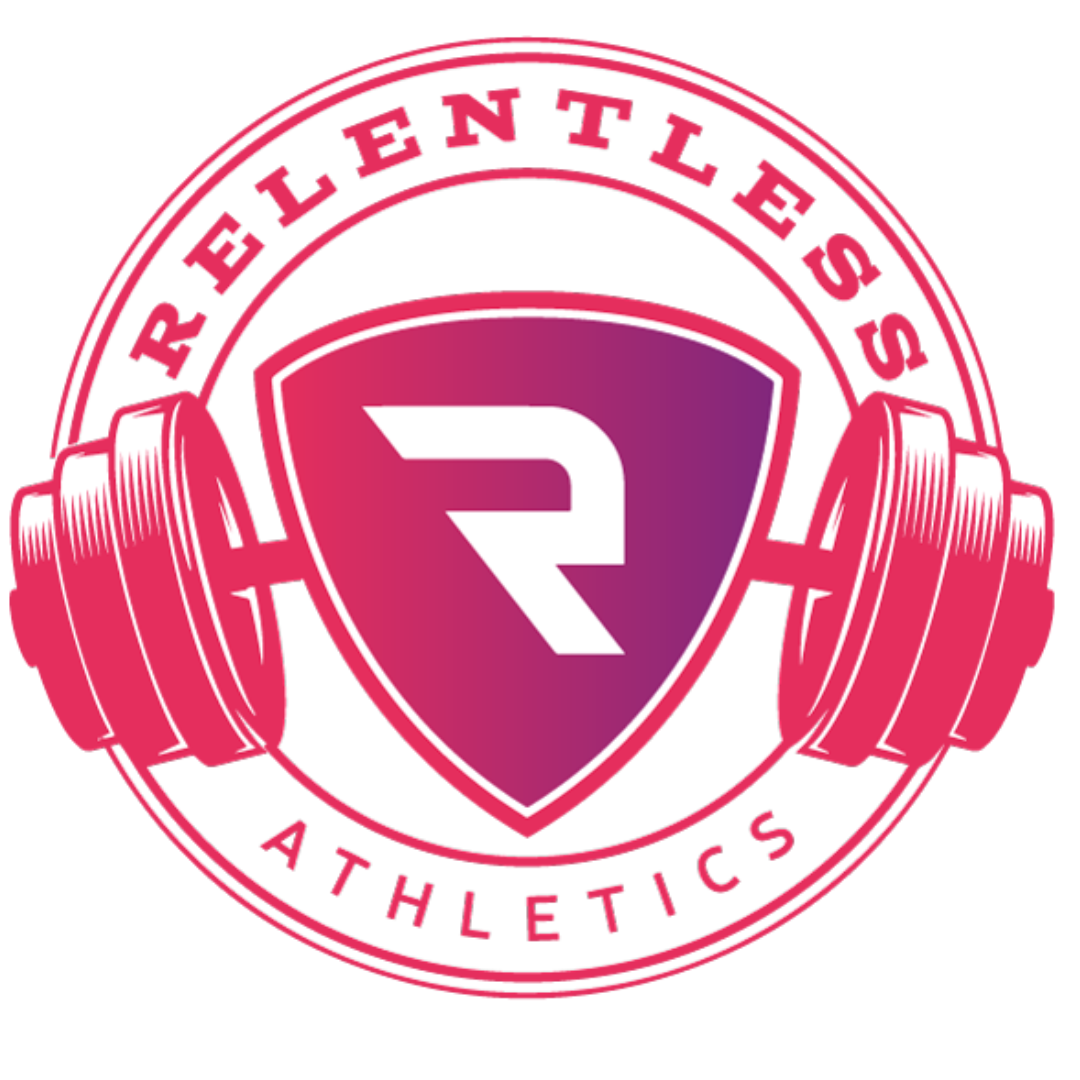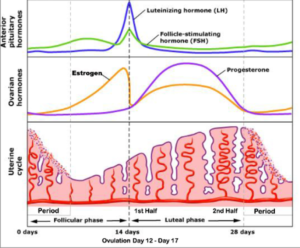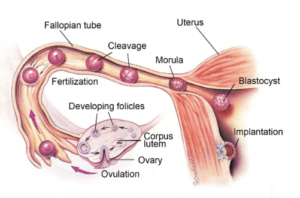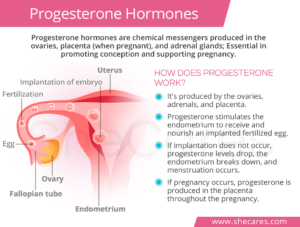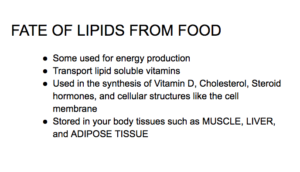Training on your Period.
TRAINING ON YOUR PERIOD
Emily R Pappas, MS Exercise Physiology
It’s time we talk about it.
Periods.
Menstrual cramps. PMS. Bleeding.
How your period affects you during game time IS REAL.
Remember when Fu Yuanhui and her teammates narrowly missed a medal in the Olympics last year while she was menstruating?
It’s not something we really talk about, but we all know: your hormones play a role in your performance.
But- it’s not just when you’re bleeding. Your hormones don’t just cycle on your period, they’re always fluctuating. This means they can change how your body responds to training and performance throughout your cycle.
In this article, we’re going to talk about the real “ins” and “outs” of
how your menstrual cycle affects your athletic goals
and how you can use that knowledge to boost performance
Knowing what’s going on with your body will give you an extra edge in your performance. Unfortunately, there’s not a lot of candid information out there for female athletes.
We’ve talked about how missing a period as an athlete is a big red flag (read more HERE). While being on the bleed can be a major hassle, it’s also an important sign your body is
being fueled right
getting enough rest to recover
and is functioning at peak!
“It sure doesn’t feel like it!”
I get it. Nothing is worse than cramps, bloating, and emotional blahs when you’re trying to push your limits and give your best to the game.
But here’s the truth: It’s OK!
Let me break down what’s going on with your body and show you how you can take advantage of your cycle to meet your training goals.
But First…The ‘Fragile Female’ Myth!
We know our cycle affects our training, but to what extent?
In the early 1900s females were advised against high-intensity training. It was thought that athletic women risked uterine ligament tears by being active. The myth was widespread, and girls were exempt from gym class. Periods became a reason women avoided the sports we love now! [1]
Thankfully, science has made some progress in understanding what’s happening with women’s bodies.
Physical educators started to recommend continued physical activity during menses. It was good progress but the idea of female fragility during the menstrual cycle continues to linger. Even now, we run into coaches and parents who believe girls should lighten their training load during their cycle! [1]
Good news, ladies! Modern science says: You definitely aren’t as fragile as we once thought!
Your body rocks. Not only can it handle your training load during menses, in some ways, but you can also use the advantages of your hormonal flow to train and perform at an even higher capacity. [2]
So if bleeding doesn’t make you a porcelain doll, what’s the REAL role menstruation plays in how you train, perform and compete?
Let’s break it down.
YOUR CYCLE STARTS HERE.
At puberty, our bodies start releasing a bunch of hormones. Each hormone has its own way of cycling. These hormone fluctuations tell our ovaries:
“Hey! It’s time to ovulate! It’s time to mature a new egg! Let’s get ready for fertilization!”
But if fertilization doesn’t happen, our uterus sheds its lining along with the unfertilized egg and we bleed.
With bleeding comes cramps. Bloating. Mood swings. And all of the symptoms that can make training during your period really suck.
But before we can talk about training on your period, we’ve got to understand what’s actually happening to our bodies.
What’s With All The Hormones?!
Your cycle length defines WHAT hormones your body release and WHEN.
Most cycles are around 24- 35 days, but tracking yours can help you really pinpoint when each phase happens for you.
During your cycle, your body is going to:
Develop an egg
Release it for fertilization
And, if fertilization doesn’t happen, shed the egg and your uterine lining
This all happens in TWO main phases: Pre-Ovulatory and Post-Ovulatory.
The shift between phases is what dictates what hormones are released in your body and when. [2]
From Strength and Conditioning for Female Athletes (plus my own lecture notes).
a little clearer depiction without the handwritten notes:)
Don’t worry! It only looks complicated. Your body is an AWESOME machine, let’s dig in a little deeper to these cycles.
The Pre-Ovulatory Stage
The pre-ovulatory stage is sometimes called the “follicular stage”. More importantly, it begins on the first day of your period or menstruation
Let me introduce the two main hormones we’re working with here- Oestrogen (aka estrogen) and Progesterone. As a female, they’re your go-to hormones when it comes to your cycle.
Prior to your menstruation, your hormone levels are HIGHER because your body is preparing for a fertilized egg to be implanted into your uterus! When no implantation happens and the levels of these hormones drop. [2]
Once your body recognizes the lack of implanted fertilized egg through this drop in hormone levels, the uterus SHEDS its lining and you get your period.
This breakdown, or your period, can occur within 3-7 days and causes somewhere between 25-65mL in blood loss. [2]
Does it surprise you to know most of us only bled .5-2oz of blood per cycle? That’s right, less than a shot glass of blood!
Side note, here’s some good news: so yes, this blood loss does cause a DECREASE of hemoglobin and iron (both of which help with o2 transport in your blood to your body)…
….BUT it’s not really significant enough to affect your performance. [2]
But back to pre-ovulation…
When your period starts, your body begins to mature a new egg to release. This egg matures in response to a gradual increase in OESTROGEN.
Meanwhile, its antagonist hormone progesterone stays relatively low.
Fast forward to day 12- 16. Your Oestrogen reaches its PEAK and two NEW hormones enter the equation. Your body experiences a SPIKE in Luteinizing hormone (LH) and follicle stimulating hormone (FSH).
All of this, coupled with low progesterone levels, tell your body it’s time to release the newly matured egg. Hello, ovulation!
The Post-Ovulatory phase
The post-ovulatory (or, the “luteal phase”) begins the moment of egg release or ovulation.
When the egg is released, Oestrogen, LH, and FSH drop, and progesterone begins to rise. This new hormonal environment helps prepare the uterus wall for a fertilized egg to be implanted.
Somewhere around day 22-26 of your cycle, your estrogen and progesterone levels peak. Your uterus is ready for a fertilized egg…but all of these elevated hormones also means this: PMS systems are also on the rise. [2]
If an egg is fertilized and implants into the uterus lining, a connection between the embryo and uterus forms a placenta, releasing progesterone and stopping the cycle. [3]
But remember if no egg is implanted, your hormone levels drop and your body releases your uterine lining.
All this means just prior to and at the very start of menstruation…a female athlete’s hormonal levels are actually the LOWEST. [2]
Hormone Levels And Your Performance
Your hormone levels don’t just affect your sex organs…they affect all of the cells in your body.
It’d be so easy and awesome if I could just tell you that during X day of your cycle, you should do X.
But it’s not that simple.
We need to remember: EVERY menstrual cycle in DIFFERENT in every woman.
Not only that, but how your hormones affect your training can also depend on YOUR SPORT!
Yes! Training for a high-intensity sport or an endurance sport means your estrogen and progesterone levels can put you at advantages (or disadvantages) at different times.
Here’s a quick look at how Oestrogen levels affect your body:
OESTROGEN
When do we see it?
A steady rise in the pre-ovulatory phase (helps the egg maturation)
A smaller rise in the post-ovulatory phase (helps prepare the uterus lining for implantation)
The effects of oestrogen include:
Increase in insulin sensitivity
Increases blood glucose uptake
Increase in pain tolerance
Increase the level of endurance
Increase in joint laxity [4]
What do these effects mean for the FEMALE ATHLETE?
Remember glycogen is stored in your muscles and liver for quick energy release when you need it. By regulating insulin sensitivity, glycogen helps fuel high-intensity activity [4]
Now, this sounds pretty ideal when we consider how our bodies fuel high performance. You see our muscles RELY on CHO as the main fuel for high-intensity exercise bouts (think sprinting down the field, or jumping up to spike a volleyball). [2]
Again, every woman’s menstrual cycle is DIFFERENT. So these effects apply GENERALLY, but not INDIVIDUALLY.[4]
Overall though…when looking at the AVERAGE female athlete…studies show higher levels of estrogen in the blood correlate to a increase in total CHO oxidation (aka usage) during exercise compared to a low estrogen condition. [4]
(more glycogen usage = higher speed of energy release = higher intensity reached in exercise)
This could mean a week or so after your period, you are in the BEST SHAPE possible to respond to strength training and recovery from heavy exercise bouts. [4]
Keep in mind, oestrogen rises also decrease your pain tolerance [4] So it is POSSIBLE that as your oestrogen levels rise, the chance of you getting injured increases as well. [2]
To Summarize:
7-10 days after your period
Decreased pain tolerance and increased risk of injury
Performance levels increase for high-intensity sports athletes
Recovery from hard training increases
So what happens when oestrogen levels and progesterone levels are present in higher amounts together in the post-ovulatory phase?
Here’s how PROGESTERONE affects the body:
PROGESTERONE
When do we see it?
Low levels in the pre-ovulatory phase
A rise in the post-ovulatory phase
The effects of progesterone include:
Promotes glycogen STORAGE in the liver
Promotes glycogen BREAKDOWN in the muscle
Antagonizes the effects of insulin on glucose metabolism (ie limits glucose uptake at muscles)
Promotes LIPID STORAGE via deposition in adipose and breast tissues
Increase in core body temperature
Increase in ventilation (minute ventilation) [2]
Increase in joint laxity
What do these effects mean for FEMALE ATHLETE?
Ok, things are getting a little confusing, we know. And that’s because the female body is COMPLEX and hormones communicate with each other to do different things (things that scientists are STILL trying to understand) [2]
When progesterone levels rise, the goal is to prepare the uterus for egg implantation and baby development. To do this, progesterone PROMOTES glycogen storage in the liver. [3]
Basically, your body is trying to store sugar in your body to potentially feed a growing baby.
At the same time, progesterone also DECREASES glucose uptake at the muscle. [4] This helps promote glycogen breakdown at the muscle. BUT it does NOT help promote glycogen resynthesis (aka recovery).
Why is this happening?
We’re not quite sure. It’s possible your body is trying to direct that glucose somewhere else. Such as to the liver as progesterone help promote liver glycogen storage. Or as a lipid in your adipose tissue. [3]
Whatever the reason, when your progesterone levels are high, FFA are not broken down like they were in the pre-ovulatory stage. Instead, they are stored along with additional blood glucose to be used as energy later in adipose tissue.
Why does progesterone increase fat storage?
Well, your body stores fat around your hips, stomach, and breasts to help protect your organs in case you do become pregnant.
But what does this mean for the ATHLETE ??
When progesterone levels are high, your ability to RECOVER from training DECREASES.
This is because your body is diverting energy towards preparing for child development. [2]
Even more, progesterone increases your joint laxity and could increase your risk of injury [3]
Why the increase in laxity? Progesterone helps your muscles, tendons, and ligaments in your uterus and cervix to relax and allow for room of a growing child.
Although beneficial when you are expecting, joint laxity is not ideal for an athlete on the field!
To Summarize:
22-26 days after your period
Joint Laxity means an INCREASED risk of injury
Training recovery becomes more difficult
At this point, you might be thinking…
So if higher oestrogen levels mean an increase in my performance….and higher progesterone levels mean a decrease in my recovering ability…..what the heck does this mean for me as an athlete? It seems like I have limited time to win!
What the heck gives???
Training On Your Period
When it comes to performance, things can get tricky.
But remember, every person…and every period…is DIFFERENT.
We all know what it’s like to have one period that leaves you stranded on the couch with cramps…versus those other times where you felt just fine.
So, now that you’re equipped with the knowledge of WHAT is going on in your body, remember that as we talk about training…no one knows your body better than YOU.
Training during the menstrual cycle
“Evidence and knowledge around the menstrual cycle, exercise performance and adaptation is largely inconclusive or contradictory overall [2]”
Hmmm….that doesn’t sound very reassuring.
BUT if you are a female who is
SIGNIFICANTLY affected by phases of your period (extreme cramps, high emotional distress, heavy bleeding, etc)
or if you participate in HIGH-INTENSITY jumping or agility based sports
….there are some generalities we can make.
First, the first two weeks of your period is the time to push hard. This includes the time during menstruation.
Why?
These are when your hormones are at the LOWEST.
Pretty ironic given the ‘fragile female’ myth, right???[1]
Next, after ovulation, hormone levels drop again. This means another time to compete!
But as you progress through the post-ovulatory phase be mindful of how your hormonal shift may be affecting your performance.
As progesterone rises….
As progesterone rises, your core body temperature will rise. This rise in temperature increases symptoms like
elevated heart rate
cardiovascular strain
and a higher rate of perceived exertion.
This means you could feel like you are pushing HARD but not performing at the level you normally do at this intensity of effort. [2]
What do you do?
Do your best to stay hydrated and understand your increased perceived rate does not mean you are getting out of shape or losing your skills…but you could just be feeling this way due to your menstrual cycle.
During times of extreme cramping, magnesium supplementation leading up to and during PMS days can help decrease cramps [2]
Check out this supplement we highly recommend for our females that experience extreme cramping during their cycles
Physiologically vs Psychologically Fit To Train
Generally speaking, you are in the best condition to perform when hormones are low.
This PHYSIOLOGY is easiest to spot:
just PRIOR to menstruation,
at the VERY START of menstruation,
and just after ovulation.
The problem?
Even though we may be physiologically ready to perform around menstruation due to lower hormones….psychologically we could be feeling like CRAP.
PMS, cramping, and bleeding can affect how you perform even though having your period is an indication your body is capable of hard training.
Here is the good news:
Keith Barker and Debby Sargent, authors of Strength and Conditioning for Female Athletes, state, “in all likelihood, maximal force production (strength) capability won’t vary significantly over the different phases of menstruation for most athletes”. [2]
This means although you may feel like CRAP (and that feeling is VERY REAL), your body is PHYSICALLY capable of performing.
Is there a chance you get that period next month that brings an influx of pain, cramping, and decreased performance? Yes. But on average, it’s not a frequent thing for a healthy female athlete. [2]
(Keep an eye out for our next post that talks about period abnormalities, performance, and birth control)
Even better, training can actually help DECREASE the symptoms. That’s right- exercise can help disperse the chemicals released at the womb into the blood flow and abdominal movement can ease cramping [2]
How Do You Know What Phase You Are In?
Take your morning temperature!
Remember how progesterone increases your core body temperature? If you track your waking temperature, you will see a shift up as you ovulate and progesterone levels increase.
If you’re an athlete that competes in hot/humid or dry environments, taking your temperature gives you an extra advantage.
A higher body temperature means a higher chance of fatiguing faster due to dehydration.[2]
So, when you are in a difficult environment, INCREASE electrolyte and water consumption at around day 16 of your period (or when you notice a peak in waking body temperature from your normal range).
Now, Get Into Your Flow
To recap:
Your menstrual cycle is a cycle of hormonal fluctuations. These hormones affect how you ovulate and prepare your uterus for child development.
These hormones affect MORE than just your sex organs and CAN affect how you feel in training and performance!
If you can, the best thing is to keep pushing yourself as you normally do.
Females are physiologically ADAPTABLE. TRAINING on your period helps you PERFORM on your period.
But, we all know that sometimes you get a bad cycle.
If you are feeling like CRAP, your cramps are INSANE, and your back is POUNDING….listen to your body and tone down the intensity of your training.
If you have no option but to compete yet you have a period that is bringing you down…stay hydrated and know you are not alone! As a female athlete, this is a burden we ALL understand. It just comes with the territory of having an AMAZING body that can both be boss on the field and bring life into the world.
REFERENCES
[1] Martha H. Verbrugge (2002). Gender, Science & Fitness: Perspectives on Women’s Exercise in the United States in the 20th Century. Health and History. Australian and New Zealand Society of the History of Medicine, Inc: p. 52-72
[2] Sargent, D., Barker, K. (2018). Strength and Conditioning for Female Athletes. The Menstrual Cycle, Exercise, and Performance. Marlborough: Crowood. pp 190-201.
[3]https://www.medicalnewstoday.com/articles/277737.php
[4] D’Eon, T., Sharoff C., Chipkin S., Grow D., Ruby B., et al. (2002) Regulation of exercise carbohydrate metabolism by estrogen and progesterone in women. American Journal of Physiology-Endocrinology and Metabolism.vol: 283 (5) pp: E1046-E1055
